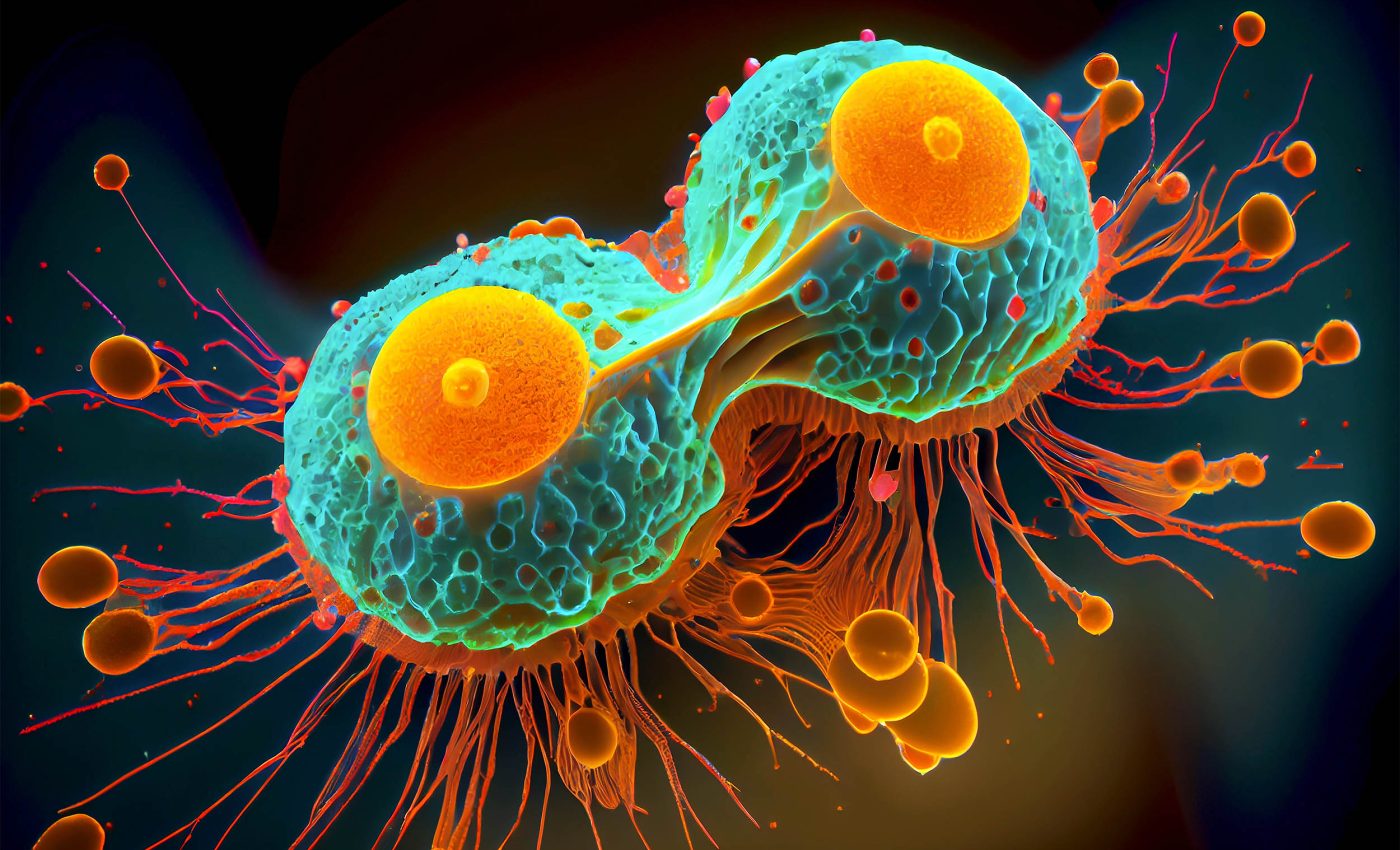
Scientists discover a molecular switch to turn cancer cells into normal cells
Cancer sometimes creeps in slowly, other times it bursts onto the scene without much warning. Either way, the disease hijacks the instructions that tell our cells how to behave, turning helpful teammates into troublemakers.
For decades, oncology has focused on destroying those unruly cells. A new line of work asks a different question: what if we could push them back to their earlier, well-behaved selves instead?
That shift in thinking matters because collateral damage from chemotherapy and radiation can leave patients exhausted, immunocompromised, or facing secondary health problems.
Turning malignant cells into harmless ones – rather than wiping them out – could soften side effects and open doors for people too frail for aggressive regimens.
Spotting the tipping point
Long before a tumor shows up on a scan, genetic and epigenetic tweaks accumulate inside would-be cancer cells. Eventually the balance tips, launching a rapid change known as a critical transition.
Physicists know a similar tipping point from the way water flashes into steam at 212 °F (100 °C). Biologists, though, have struggled to pin down that instant in living tissue because every cell moves at its own pace.
Researchers at the Korea Advanced Institute of Science and Technology (KAIST) recently reported a method that captures this fleeting window.
The team at KAIST, led by Professor Kwang-Hyun Cho of the Department of Bio and Brain Engineering, calls its approach REVERT, short for REVERse Transition.
The idea is to record each cell’s gene activity, reconstruct the internal circuitry, then simulate how the circuitry shifts as cancer sets in.
REVERT kills cancer with math
Many computational cancer models rely on differential equations packed with hard-to-measure parameters.
REVERT keeps the math lean by translating gene networks into Boolean logic: every gene is either on or off, yes or no.
That stripped-down map is surprisingly powerful. It lets the software explore all the stable states – called attractors – that a cell might occupy and rate each one with a malignancy score.
A low score reflects orderly growth signals. A high score flags a pattern more typical of tumors, such as constant division or resistance to suicide signals.
By nudging one switch at a time in the computer, the investigators can ask which combinations shove a high score back down.
Pausing a rogue gene pair
Colorectal cancer gave REVERT its first real-world test. The researchers fed the program single-cell RNA-sequencing data from patient biopsies, watched the simulated cells cross the transition, and searched for breakpoints.
One culprit popped up quickly: MYC, a gene famous for stepping on the gas in many cancers. Shutting off MYC alone, however, did not restore order. The malignancy score fell partway, then stalled.
A second gene, YY1, changed the picture. Treating MYC and YY1 as a toggle switch produced two stable outcomes. Tip the balance one way and the cell speeds toward malignancy; tip it the other and normal behavior resurfaces.
“We have discovered a molecular switch that can revert the fate of cancer cells back to a normal state by capturing the moment of critical transition right before normal cells are changed into an irreversible cancerous state,” said Cho.
From code to colon organoids
Finding candidate switches in silico is useful, but genuine tissues decide whether a therapy will fly. The researchers collaborated with Seoul National University, which provided colon organoids grown from patient samples.
When scientists reduced activity of USP7 – another REVERT-highlighted target – the organoids regained orderly architecture.
Cells once eager to overgrow instead respected their neighbors’ space and lined up neatly. Those test-tube results hint that similar reversions could emerge in living patients.
“In particular, this study has revealed in detail, at the genetic network level, what changes occur within cells behind the process of cancer development, which has been considered a mystery until now,” Cho explained.
He added that uncovering those hidden levers marks the first time anyone has shown that “an important clue that can revert the fate of tumorigenesis is hidden at this very critical moment of change.”
Using REVERT on different cancer types
Colorectal tumors were the proving ground, yet the underlying logic of critical transitions spans many cancers.
Lung and breast malignancies, for example, also pass through mixed-identity stages where healthy and diseased programs overlap.
Because REVERT focuses on that limbo period rather than late-stage chaos, it may reveal intervention points earlier than traditional drug screens.
Single-cell transcriptomics keeps improving in depth and speed, so feeding richer datasets into the Boolean engine should sharpen its predictions.
At the same time, CRISPR-based gene editing has grown precise enough to toggle multiple switches in living tissue.
Pair those tools and oncologists could one day customize reversion cocktails for each patient, sparing healthy organs the collateral hits of broad-spectrum treatments.
Cancer, REVERT, and regenerative meds
The attractor landscape at the heart of REVERT does more than illuminate cancer. Stem-cell biologists routinely coax cells to choose fates during laboratory reprogramming.
Errant transitions, however, can derail tissue-engineering projects. A map that catches switches before the wrong fork could refine protocols for growing heart muscle, insulin-producing pancreas cells, or even neurons for spinal-cord repair.
For now, the new framework remains a laboratory concept. Clinical trials that target paired switches must prove safe and durable.
Tumors also mutate quickly, potentially rewiring the very circuits researchers aim to reset.
Even so, a strategy that persuades misbehaving cells to stand down – rather than carpet-bombing them – offers a fresh playbook in the long fight against cancer.
The full study was published in the journal Advanced Science.
—–
Like what you read? Subscribe to our newsletter for engaging articles, exclusive content, and the latest updates.
Check us out on EarthSnap, a free app brought to you by Eric Ralls and Earth.com.
—–













